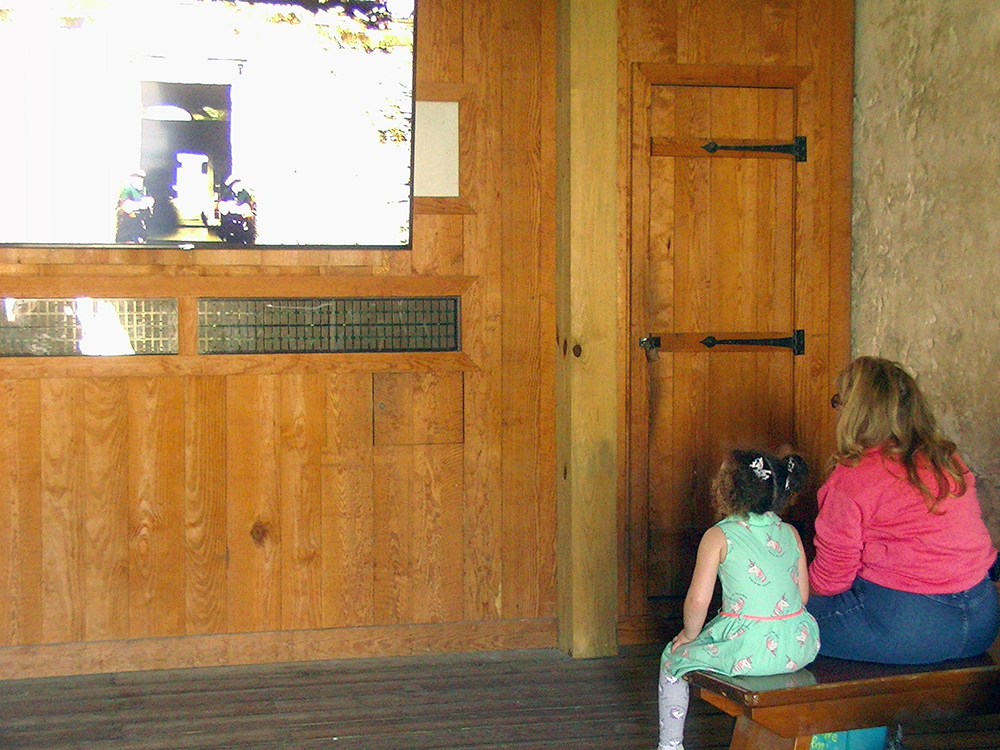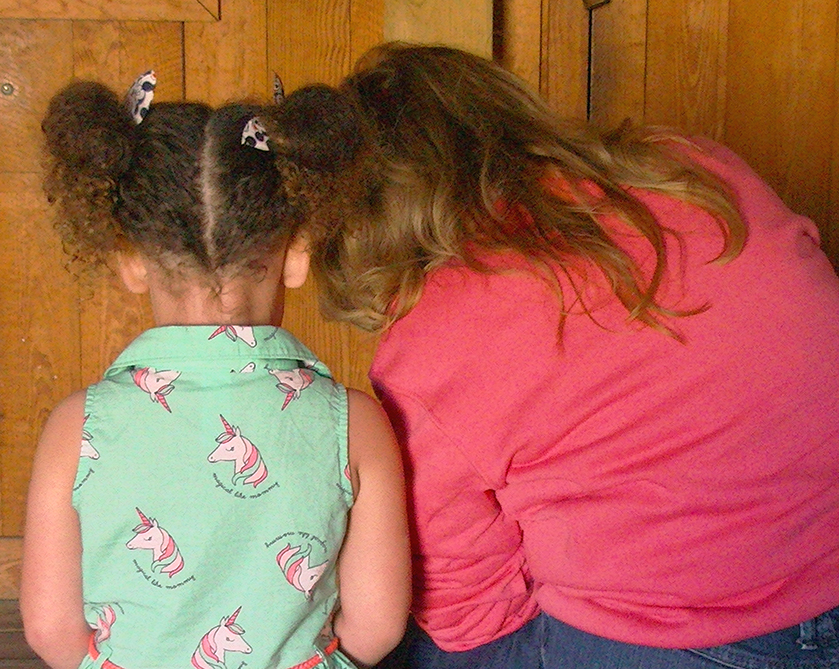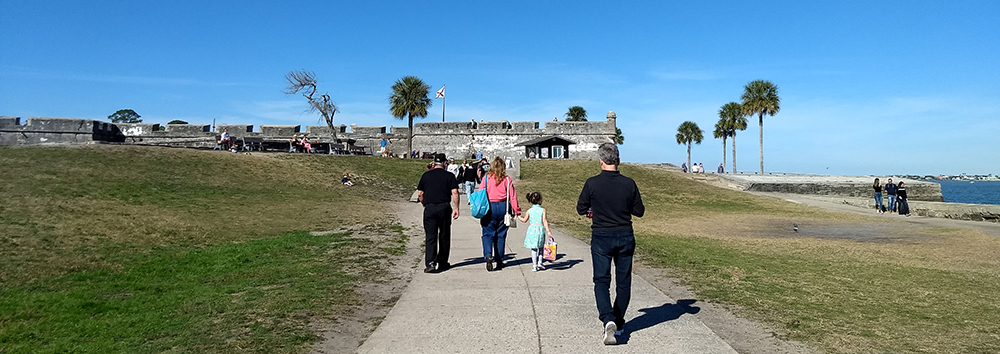
What better to do during the cold winter months than to visit sunny Florida? OK, maybe Hawaii, but that’s beyond our budget, guys. But Florida has some beautiful, historic, and educational sites to visit, so that’s what we did. We’ll be posting several excursions we took in the next few weeks, and today we’re starting with the OLDEST masonry fort in North America, and the only one still standing. Grams had never heard of it, but Aliyah was keen to get us up to snuff on American history and military architecture, so off we went.

Aliyah had never seen an entire standing fort before, and neither had Grandma! Foundations, sure. Recreations, yes. But the whole, intact structure? No. So we were all pretty excited about this particular adventure. Plus, it must also be a castle, because the name says so, right? Technically it was sort of both. A castle is basically a big defensible residential building (think battlements and moats, kings and queens) and it was originally the home of the first governor of St. Augustine. But it was a fort too! It supported a military presence and supplied a bunch of outposts and patrol ships that protected the Florida east coast from pirates.
Construction began on this masonry fort/castle back in 1672, when Florida was still a Spanish territory – “New Spain.” There had been a wooden fort on this site, but it was a shabby mess that was overrun by pirates in 1668 who sacked the town, killed 60 people, and Woke Up the Spanish government. The Spanish Queen Regent authorized a new, more permanent structure and the Viceroy of New Spain and the Governor of Cuba kicked in some cash. (Just for fun, here’s an illustration of how big New Spain was at the time: all the shaded areas):
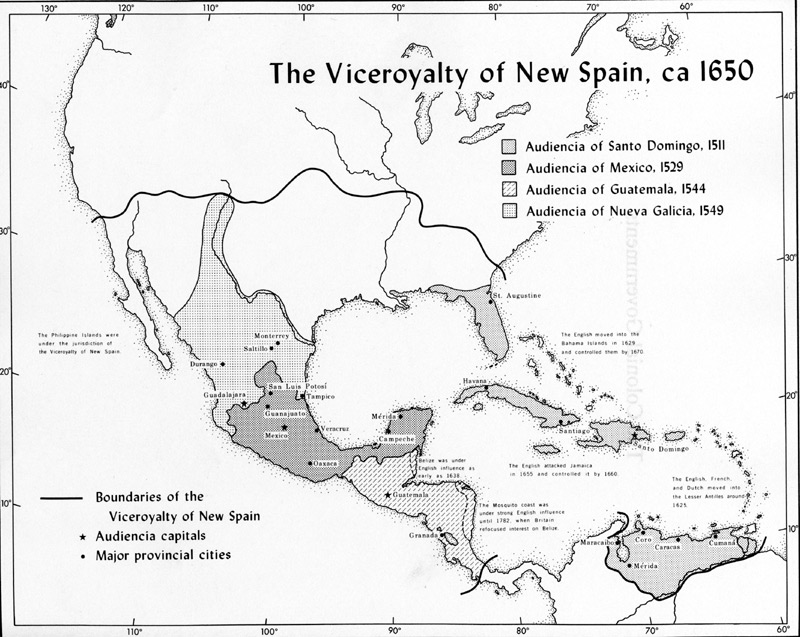
Castillo de San Marcos was designed by military engineer Ignacio Daza, who died seven short months after arriving in Florida. But his fortress NEVER EVER fell. Not to pirates, not to the English, not to anybody. Pretty amazing. Engineers rock!
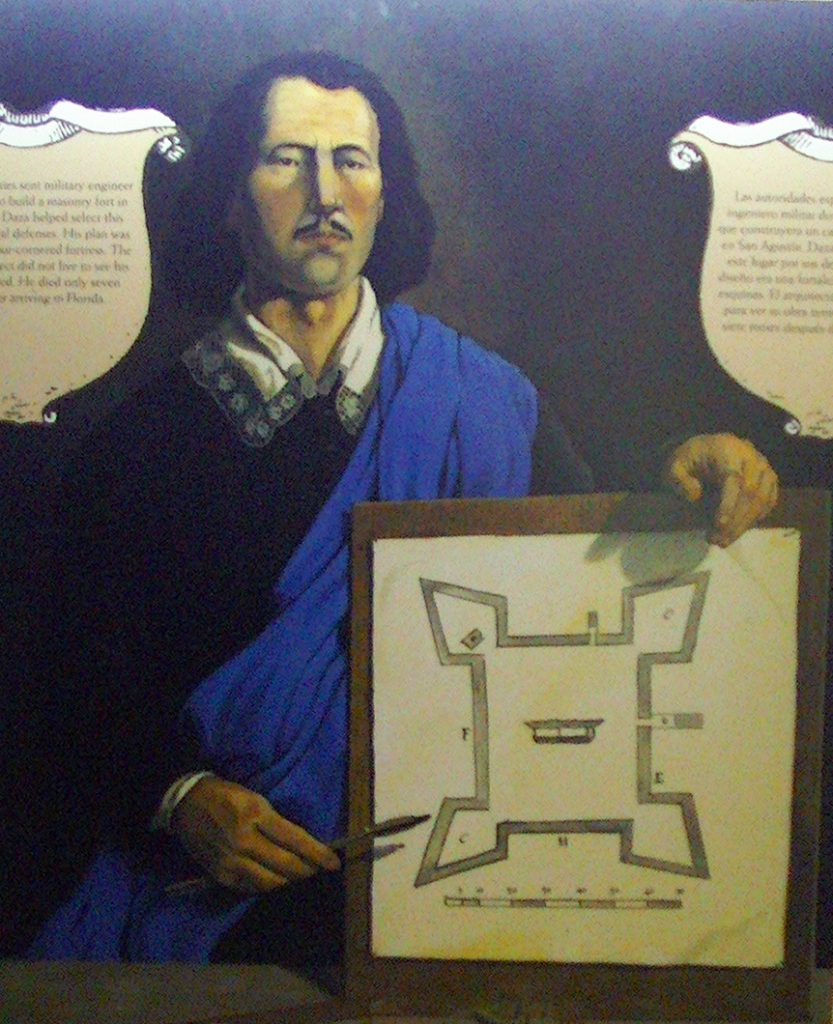
First off there is a moat, and a bridge that everyone has to cross to get into the fort. Or castle. This was called a “dry moat” because it was never intended to hold water. But it would provide a clear shot at anyone trying to enter without permission. Also, livestock were kept in the moat during sieges to protect them, so it all seems to have worked out pretty well.

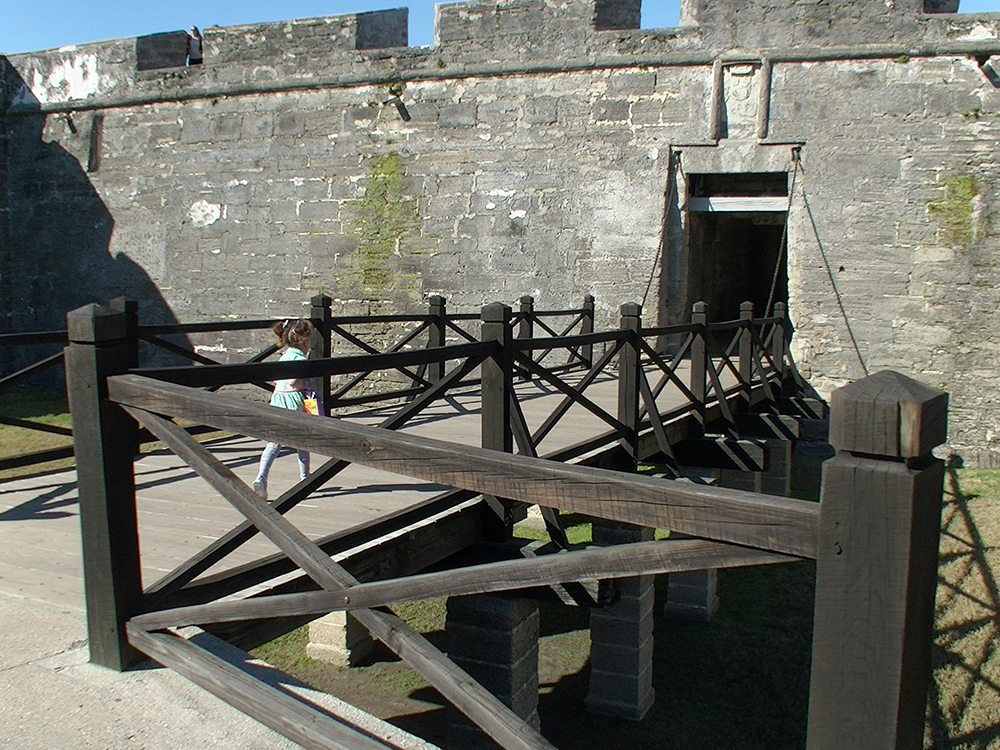
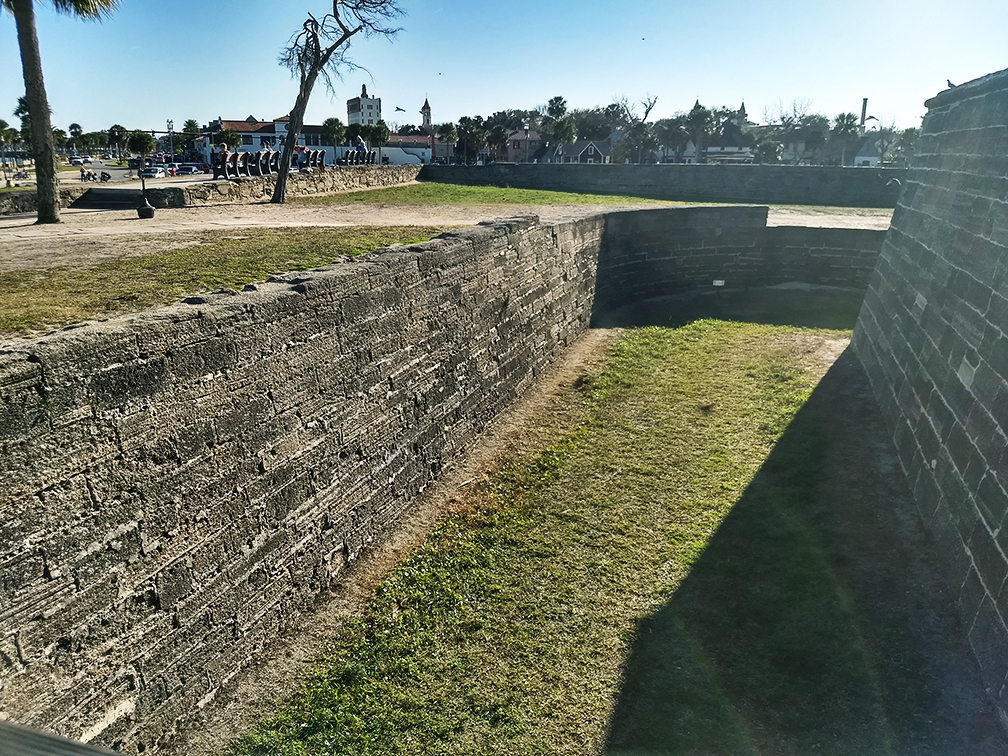
You can see in the pic below that the fort has a whole system of earthworks around it, and they all slope *down* towards the fort, not up as I would have imagined. The pointy diamond bits at the corners of the main structure are called bastions, and we were told that they improve visibility and made it easier to defend the outer walls.

(Source: National Historic Register)
Speaking of the walls, they averaged TWELVE feet thick and were constructed of something called coquina, which looks to me like seashells mixed with mortar and stuff. Actually it’s seashells smushed together with dissolved seashells (calcium carbonate). So basically the seashell version of styrofoam. Lots of air pockets, and doesn’t sound so tough. HOWEVER, if you fire a cannon ball into twelve feet of seashell rock/foam, the cannon ball is never heard of again, apart from a slight belch of satisfaction from the wall. So this fort was never ever conquered. And no termites!


One of the first things we saw as we walked into the central courtyard was the collection of cannons and big guns. Aliyah had no idea what these things were, but she definitely wanted to climb on them. And she never even heard of Jane Fonda, so go figure! But then she did ask if we could shoot her out of one like in the cartoons, so Granddad must have done a great job of explaining what cannons do and what NOT to put in them. Like your grandchildren. The cannons here are designed to shoot between 2 and 40 pound projectiles, including cannon balls but also random iron, lead, wood, and flammable materials. But no tiny acrobats. Sorry/not sorry.


We learned that this Spanish cannon, and others like, were engraved with the name of the cannon, its composition, the name of the foundry and its master, and the date it was produced. It even had a scroll decoration honoring the reigning Spanish monarch on the date of production (Charles III.) That’s a lot of information for one piece of artillery! So I’m guessing if something goes wrong with the artillery, you know who to blame.
We found a pretty creepy chamber accessible only by a tiny opening from another room, with no windows or exterior door. The lighting was very dim, so a great gothic feel. *looks for black pirate t-shirt* You would think it was a secret torture chamber, but no. It’s where they *tried* to keep their gunpowder, but it was too damp. So they solved the problem by throwing their garbage in there and finally sealed it off. Talk about sloppy housekeeping. Can you imagine being the person to open it back up and discovering all that stinky trash?
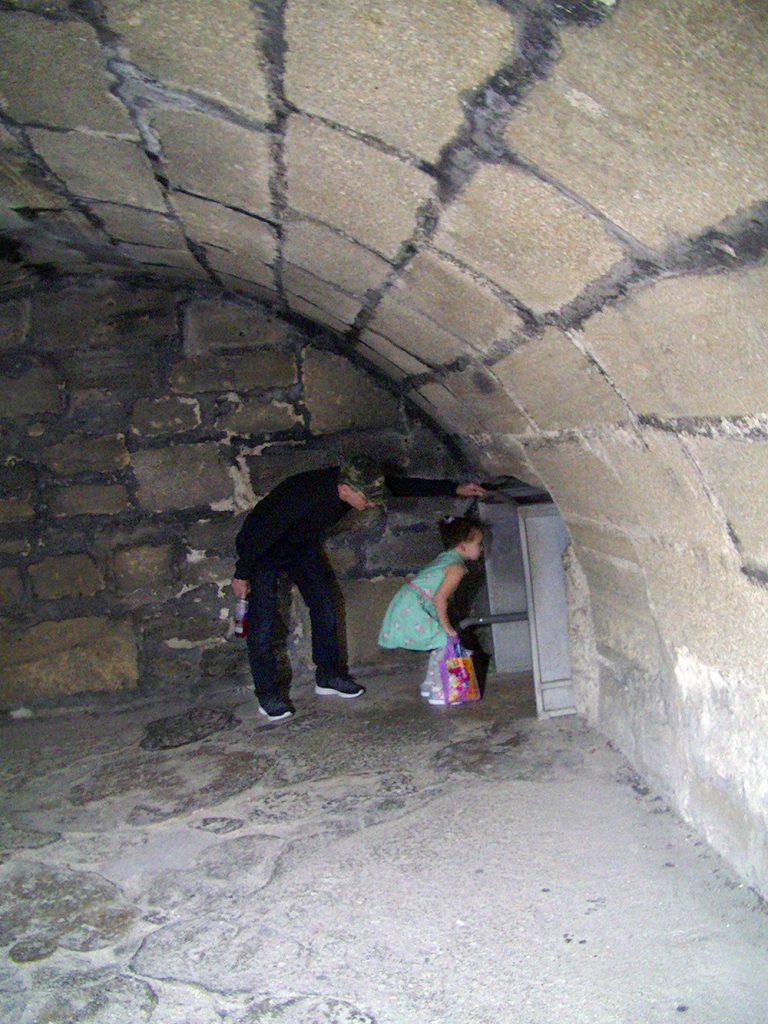
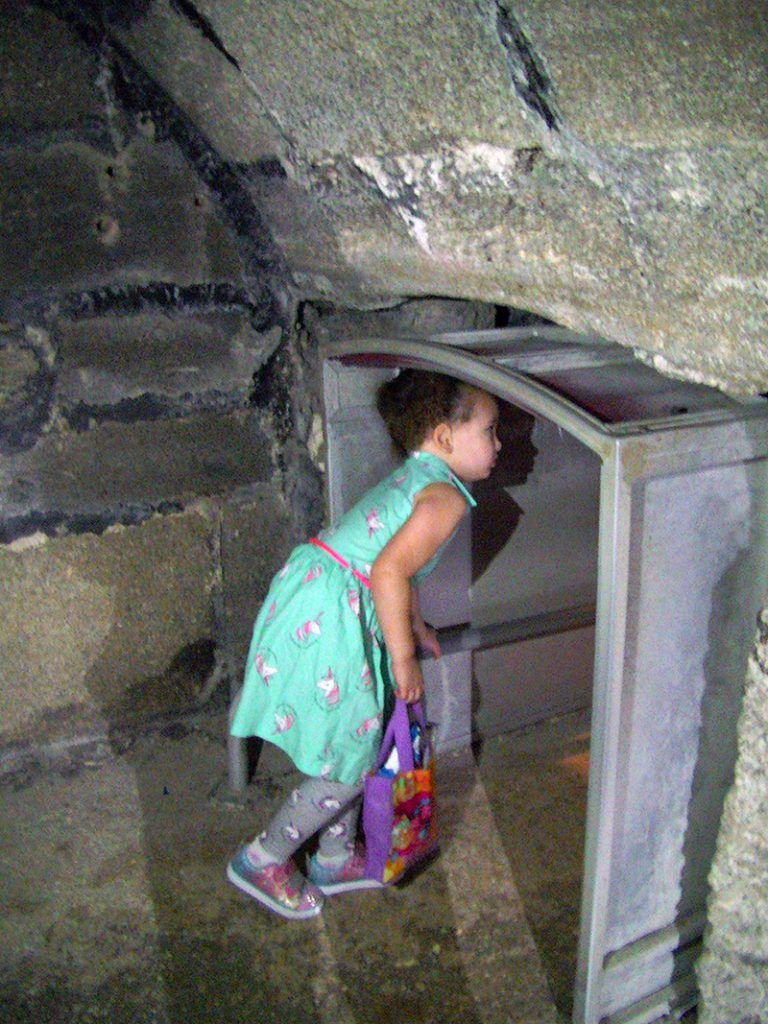
Aliyah didn’t mind ducking her head to get in and out, but Heaven help anyone tall or chubby or averse to scrunching into small spaces. If you’re claustrophobic, this is not the place for you.
After being in that cold, damp space, it was nice to stretch out in the sunshine, and Aliyah knows. She also knows planking. Is that even still a thing??
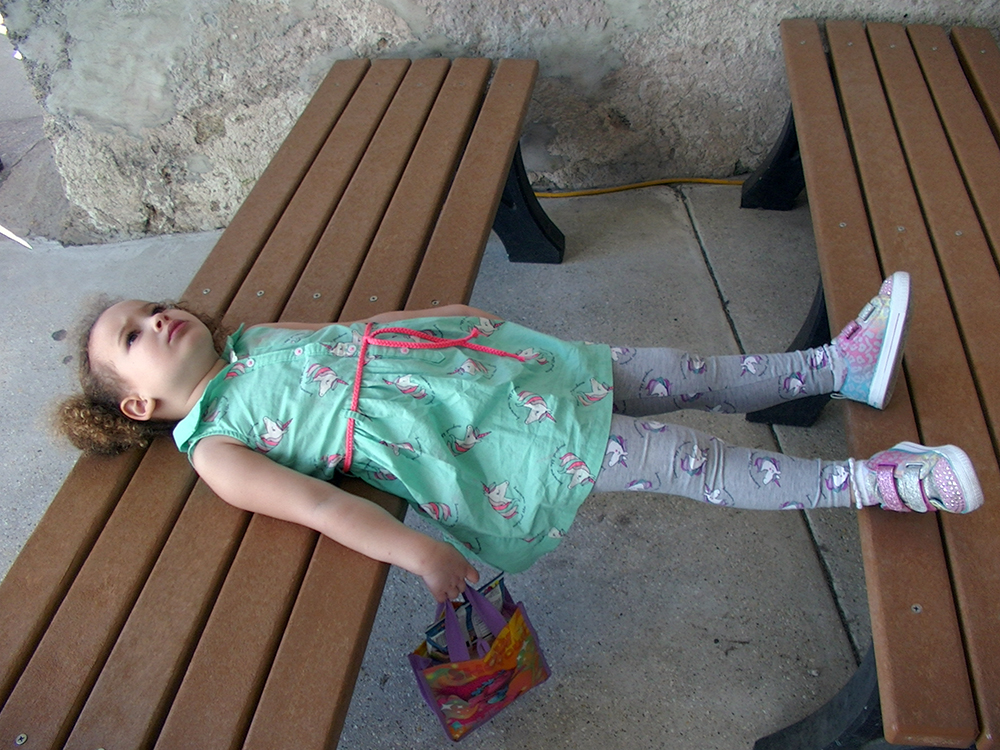
Aliyah led us through several other rooms, including a grim section where prisoners were housed, including Confederate soldiers during the Civil War, and Native Americans during the 1800s. About 500 Chiricahua Apaches (mostly women and children) were imprisoned for over a year in 1886. Aliyah doesn’t understand this part, but every one of us has inherited the capacity for good and for evil. No one can claim to be inherently better, but we show who we are through our actions Every. Single. Day. As they say, which side of our nature are we going to feed today?
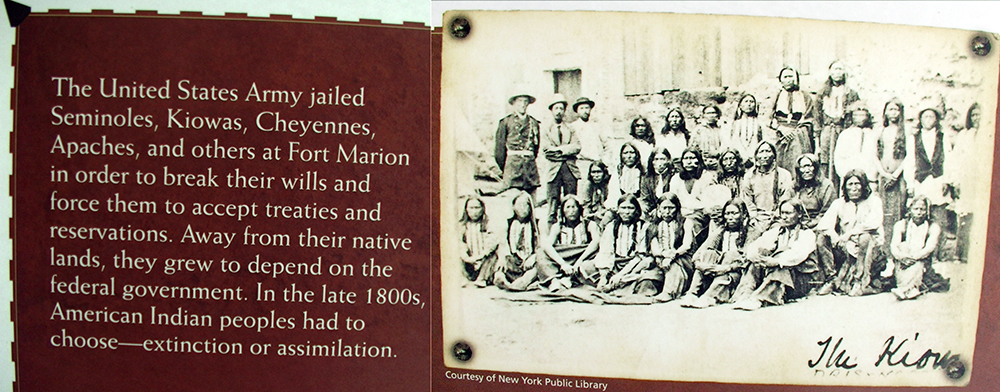
There are a number of etchings on the wall where prisoners carved figures, such as an Apache Fire Spirit. There are no colors, but the art is protected by glass, with drawn renditions so you can see what they drew.

On a brighter note, there were also examples of successful women for Aliyah to admire. Below is a pic of Antonia Avero, a business woman who owned several properties in the area. We didn’t find much info on this lady, but she was apparently a big deal. And I’m guessing she didn’t put up with a lot of nonsense from anybody.
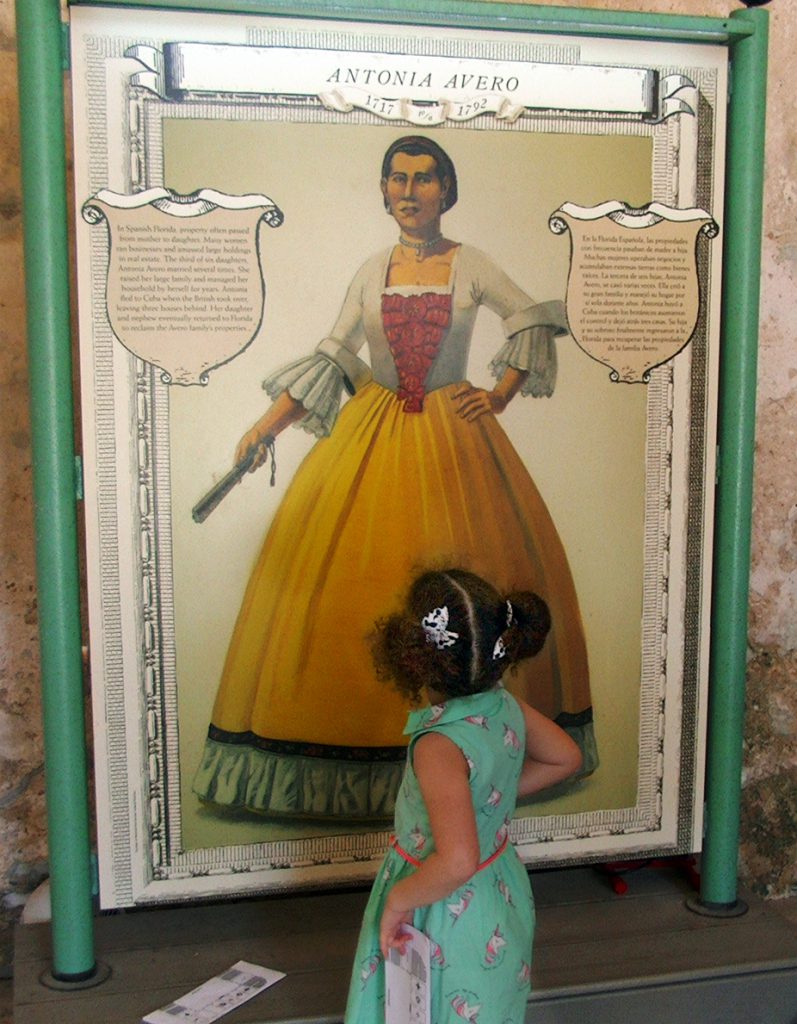
Next, we saw a residential area for the soldiers. Aliyah liked the playing cards and fancy red uniforms, and the little writing desk. She asked if we could try on the clothes, but she’s getting used to “no” in museums and exhibits. But still asks to be sure!
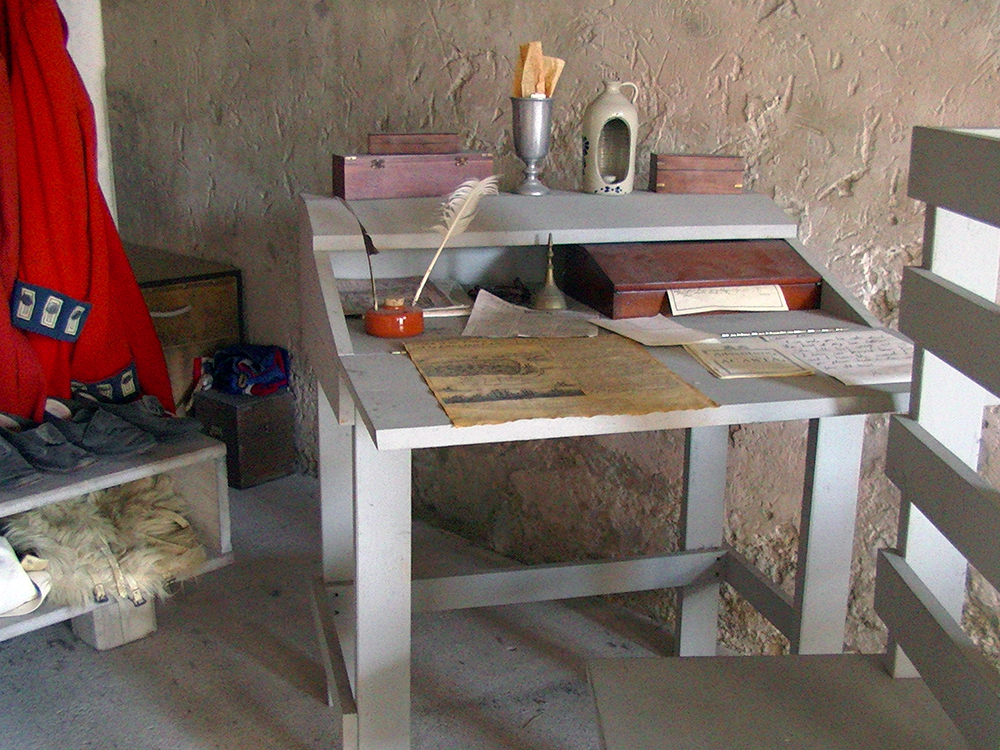
Note to self: write Mom back 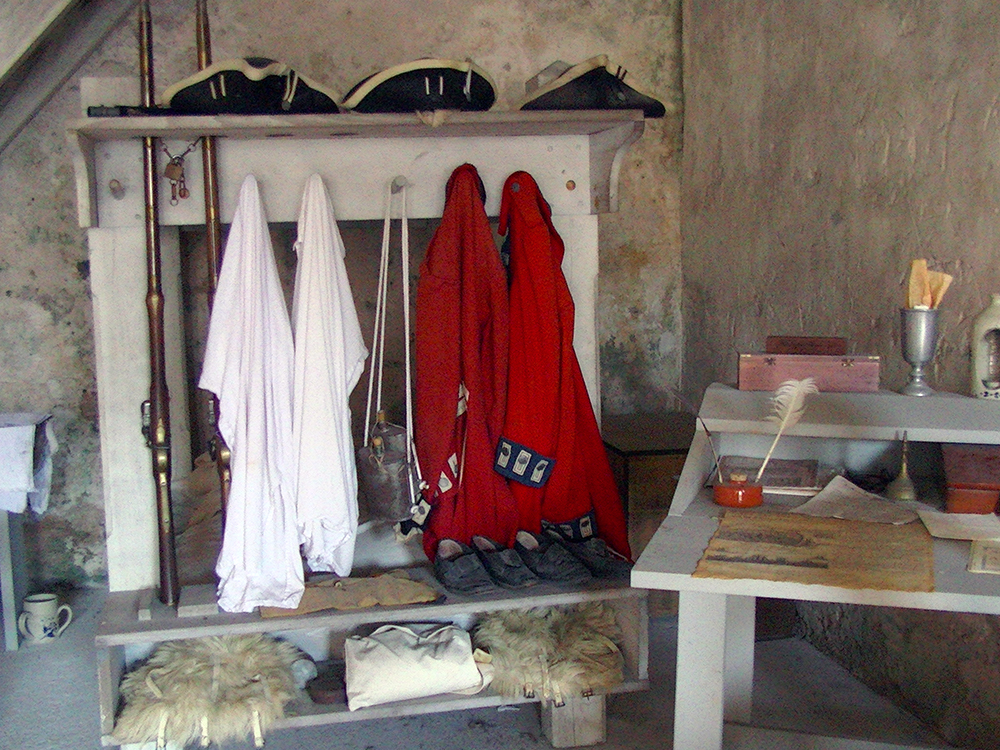
So neat and tidy 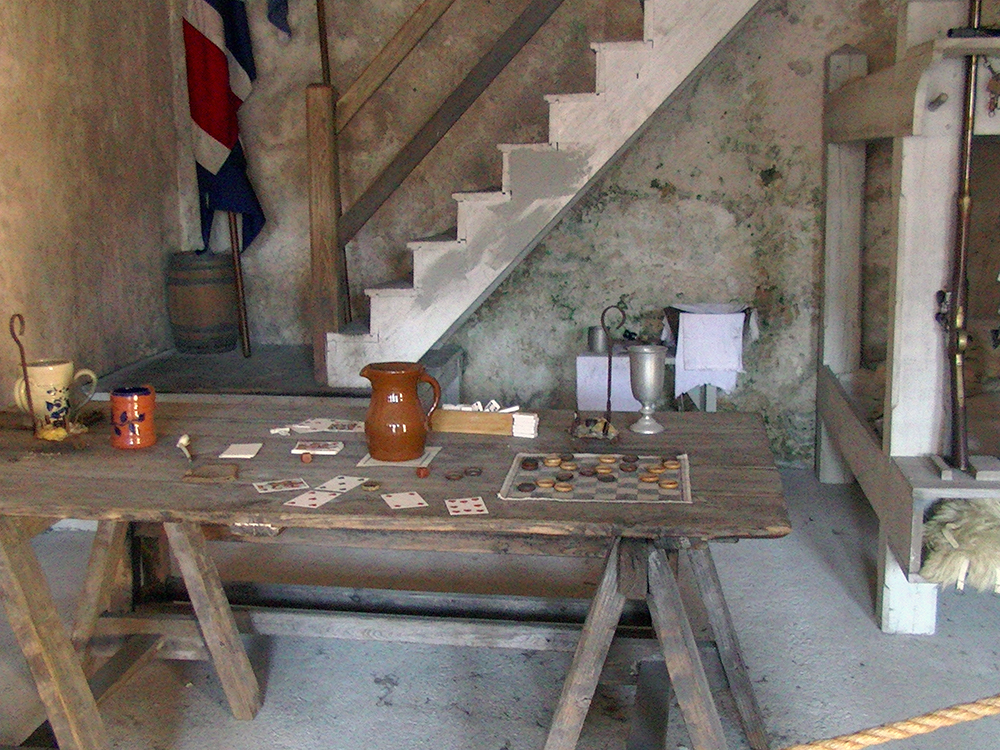
Take time to hang out with your friends
We found a largish room that has been repurposed as a movie theater where Aliyah could do what comes naturally to kids everywhere these days… watch TV. She was happy to sit and watch, and had questions for her Auntie Linda about what she was seeing. Luckily, Linda is a school teacher, so she knows LOTS of stuff about everything. And patient, lol. No wonder Aliyah loves her so much!
So of course, you are all asking about the fort’s bathrooms at this point in the tour. Because, well, you know. You are in luck, because Aliyah discovered that they had SELF-flushing toilets. That’s right, they flushed with the tides twice a day. How convenient and ecologically friendly is that?! But maybe check the tides before bathing in the sea…

After the movie break, Aliyah took us up top, but reminded us to supervise her closely, as she CANNOT be trusted around low ledges. Especially with the gorgeous views available. And lesson learned – don’t climb on the cannons, even if they aren’t roped off. Urgh.

Hold ’em if you love ’em 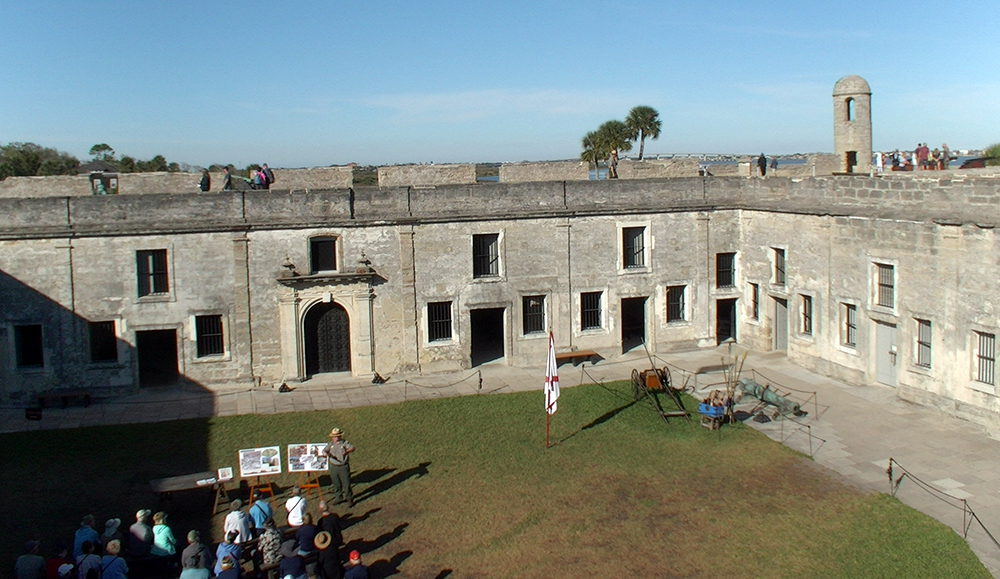
School’s in session! 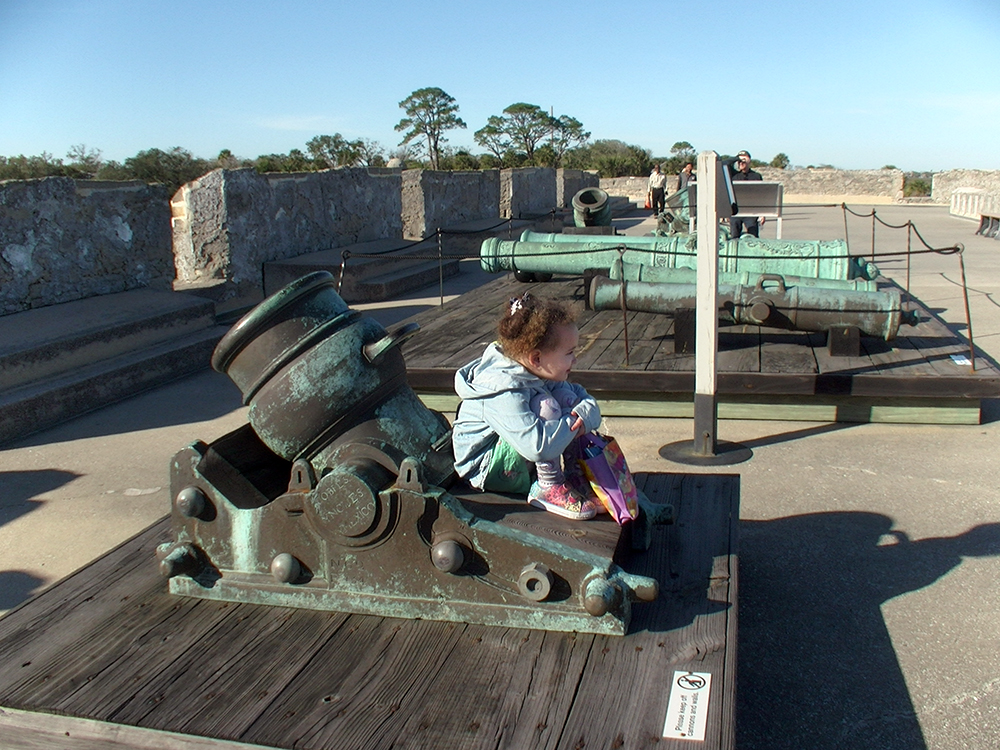
DON’T DO THIS!!!
It was so beautiful up top, with the view of the bay, that we all had to take more pictures, with at least a couple for Linda & John. This did NOT please Aliyah, who was pretty sure that there should never, ever be any pictures without her in them.
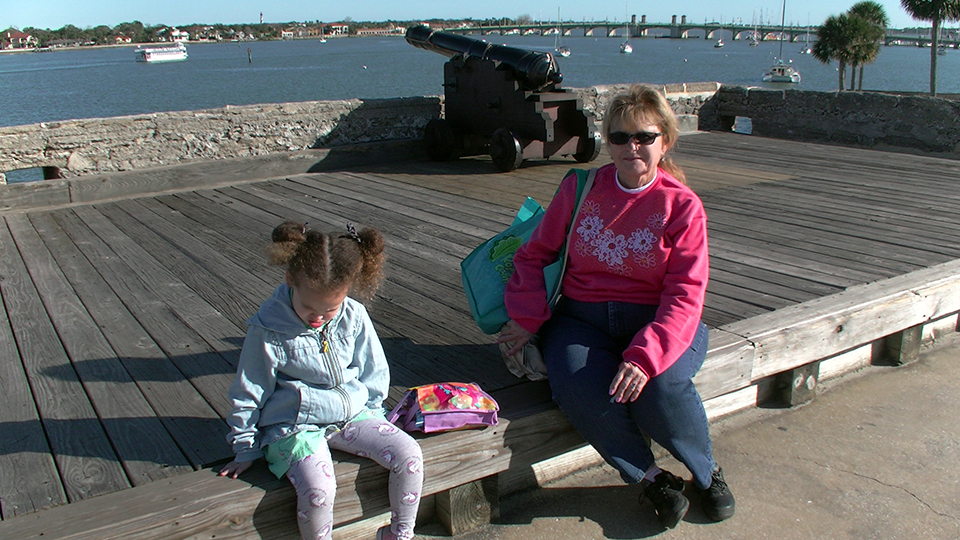
But all was not lost, as she got her pics after all. Whew, disaster averted!

Since Castillo de San Marcos is part of the National Park system, be sure to get your National Park Passport book stamped. Don’t have one? You can buy one in the gift shop! If you have one but forgot it, you can buy 3 white stickers for a buck, stamp them with the date of your visit, and stick one in your book. That’s what we had to do, ’cause we forgot ours. There’s a little corner in the back of the gift shop where you can find passport books, stamp yours, and even buy stickers to add to your collection. Aliyah loves her passport book, and so do Grams and Granddad!
For you history buffs, check out the National Historic Register. They have 73 pages of details and lots of pics. (https://catalog.archives.gov/id/77844063)

Since we couldn’t eat inside the Fort, we finished up with a little snack outside on the grounds. There are several nice benches a girl and her peeps can hang out and recharge, before heading off to the next adventure!

Aliyah’s Review: Aliyah especially liked hearing about how the pirates attacked, fired cannons at the fort, and tried to get the king’s treasure. She also liked the story about several Native Americans who escaped from the fort after several months of captivity. She didn’t like having to get off of the cannon. Two little thumbs up!
About Castillo de San Marcos
Website: www.nps.gov/casa/index.htm
Address:
1 South Castillo Drive
St Augustine, FL 32084
Phone: (904) 829-6506
Directions: https://www.nps.gov/casa/planyourvisit/directions.htm
References
- National Park Service Website: https://www.nps.gov/casa/index.htm
- Encyclopedia Britannica, Castillo de San Marcos National Monument – https://www.britannica.com/place/Castillo-de-San-Marcos-National-Monument
- National Historic Register, https://catalog.archives.gov/id/77844063

